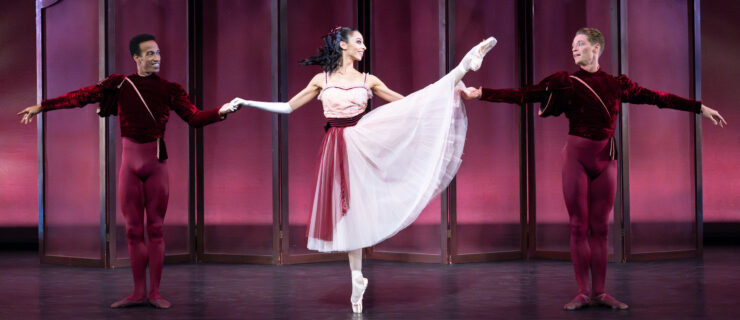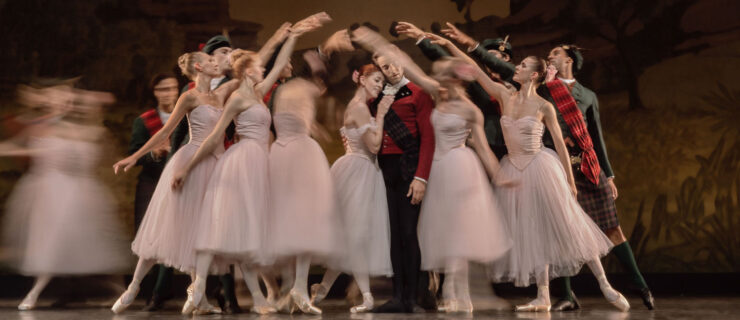Ask Amy: Technique or Artistry
Have a question?
Click here to send it to Suzanne Farrell Ballet dancer Amy Brandt.
I go to a strict school that is very technique driven. However, the summer intensive I just attended focused more on performance quality. Going back to my old studio, should I keep thinking about my presentation or return to dancing like a stiff robot? How can I still please my teacher? —Lauren
One of the wonderful things about summer programs is that they open your eyes to new perspectives. As you start branching out into the larger dance world, you’ll discover many different and sometimes contradictory approaches to training, all of which contain elements of truth. Your home studio’s emphasis on technique may feel a bit robotic or boring, but it probably stems from the valid philosophy that you should learn the rules before breaking them. A strong, solid base is essential, so try not to be dismissive of your teacher.
However, it’s imperative to develop artistically if you want a professional career. This summer served as a major artistic awakening for you. Rather than throw it all away, apply what you’ve learned to your meticulous technical training. Test the waters—see where your newfound presentation fits within the boundaries of your school’s syllabus. Take advantage of variations class, rehearsals, even jazz classes, where you’ll have more artistic freedom. And give your teacher a little credit—she knows that you’ve been studying with other instructors and probably expects you to return home dancing a little differently.
At the end of last season, my director gave me a principal role (our company is unranked). I felt very proud of my performance. But I’ve just been cast in a role usually done by apprentices. I can’t help but feel discouraged. How do I get back to the dancer I was? —Sherron
Trust me, most of us know how you feel. Casting rarely pleases everyone, and it’s hard not to interpret a minor role as an ominous sign of rejection. However, try not to take it so personally. In unranked companies, directors have more freedom to cast who they feel best embodies the role, and in this instance you simply may not be the right fit. That doesn’t mean you’re a bad dancer; it just means your movement style or even your look doesn’t suit this specific ballet. Your director may also simply want to give other dancers opportunities.
The artistic staff obviously sees your potential based on last season’s casting. But remember, one principal role doesn’t mean you’re entitled to them from now on, especially when you’re a young company member. Since it’s early in the season, don’t panic—and definitely avoid coming off as defeated or ungracious. Use this setback as incentive to work harder than ever. If poor casting continues throughout the year, try talking to someone on the artistic staff to gain insight into their casting decisions and see if there’s something you need to improve.
My shoulders naturally slump forward. When I try to push them back, my teachers tell me I look too stiff. But when I relax them, they tell me to push my shoulders down. I’m not sure what to do. —Emily
I can relate—I’ve been fighting slumpy shoulders my whole career. Called rolled shoulders, they can result from having weak upper back and tight chest muscles, and unfortunately create a self-conscious or lazy-looking aesthetic. Luckily, stretching and strengthening exercises, along with some added awareness in class, can help improve your posture.
Karen Clippinger, a kinesiologist and professor at California State University, Long Beach, recommends this exercise from her book Dance Anatomy and Kinesiology. Sit crossed-legged on the floor and hold a Thera-Band taut between your hands; have your palms facing up and elbows bent at a 90 degree angle. Keeping your elbows close to your sides, pull the ends of the band apart so that your shoulders externally rotate. Then, arch your upper back, making sure to engage your lower abdominals to prevent your pelvis from tipping forward.
Sometimes dancers overcompensate by squeezing their shoulder blades together tightly, almost eliminating the space between them. This could be what you’re doing when your teacher says you look stiff. Instead, push your shoulder blades down and lift your chest slightly (keeping the ribs together), as if you’re wearing a beautiful diamond necklace. At the same time, imagine both shoulders expanding outwards to the sides. This should help you engage the right muscles.





